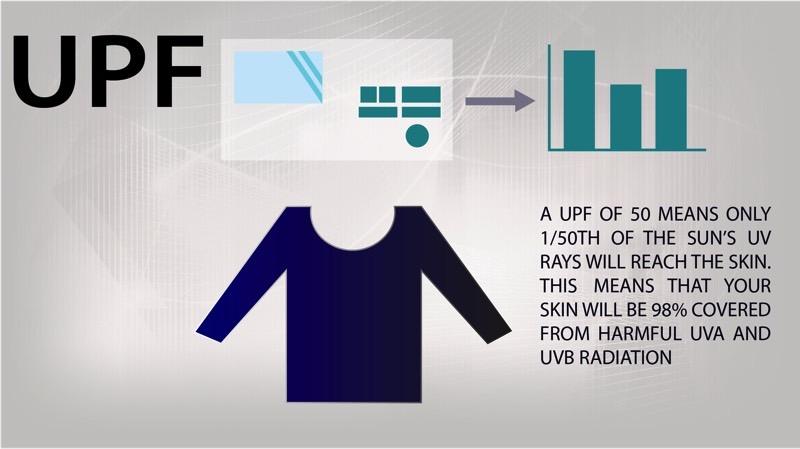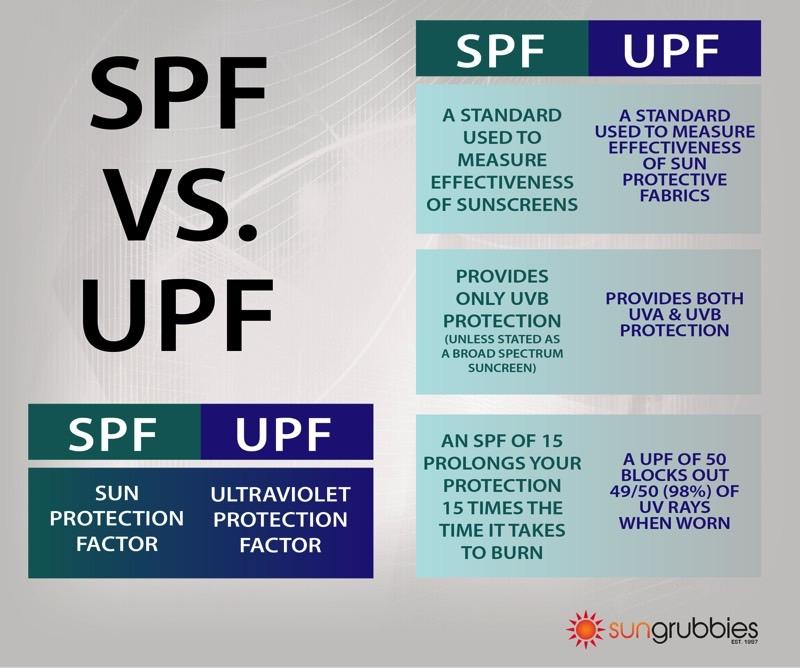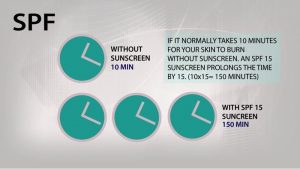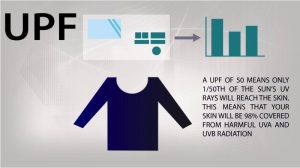
 Summary of all major differences between SPF and UPF rating systems. What you need to know about SPF and UPF.
Summary of all major differences between SPF and UPF rating systems. What you need to know about SPF and UPF.
Both SPF (Sun Protection Factor) and UPF (Ultraviolet Protection Factor) are standards used to measure sunburn protection. SPF, the standard used to measure the effectiveness of sunscreens, has been around for many years. The UPF system is relatively new and was created specially for sun protective fabrics. At first, American sun protective fabrics were rated using the SPF standard until the FTC finalized the UPF standard we have today. Use of the UPF standard is voluntary so some sun protective fabric manufactures still use the SPF system.
SPF Rating System
SPF measurements are done on human subjects. SPF, is a gauge of how much time a person can be exposed to the sun before getting burned. For example, if you burn in 10 minutes without sunscreen and you apply a liberal dose of sunscreen with a SPF number of 15, you should be protected from a sunburn for 150 minutes. Although sunscreens with identical SPF numbers give you equivalent sunburn protection from UVB rays, no sunscreen product screens out all UVA rays. Some may advertise UVA protection, but the current SPF standard does not measure the amount of UVA protection.
Although experts still believe that UVB is responsible for much of the skin damage caused by sunlight –especially sunburn– UVA may be an important factor in other types of sun damage, including premature aging, wrinkles and the development of skin cancers.
UPF Rating System
UPF measurements of fabrics are generally tested by spectrophotometer equipment and are not tested using human subjects. The UPF rate indicates how much of the sun’s UV radiation is absorbed by the fabric. For example, a fabric with a UPF rating of 50 only allows 1/50th of the sun’s UV radiation to pass through it. This means that this fabric will reduce your skin’s UV radiation exposure by 50 times (98% UV block) in areas where the skin is protected by the fabric.
One big advantage of the UPF standard is that both UVB AND UVA are measured.
The table below illustrates the different UPF protection ranges and the percentage UV blocked.
| Protection Category | UPF Range | UPF Values Allowed on Labels |
Approximate % UV Blocked
|
|
Good UV Protection
|
15 – 24
|
15 and 20
|
93.3% – 95.8%
|
|
Very Good UV Protection
|
25 – 39
|
25, 30 and 35
|
96.0% – 97.4%
|
|
Excellent UV Protection
|
40 – 50+
|
40, 45, 50 and 50+
|
97.5% – 98.0%
|
For more detailed information on the differences between UVA vs. UVB rays go to Source link Source: www.sungrubbies.com/blogs/news-articles/90201091-spf-vs-upf-what-is-the-difference
































